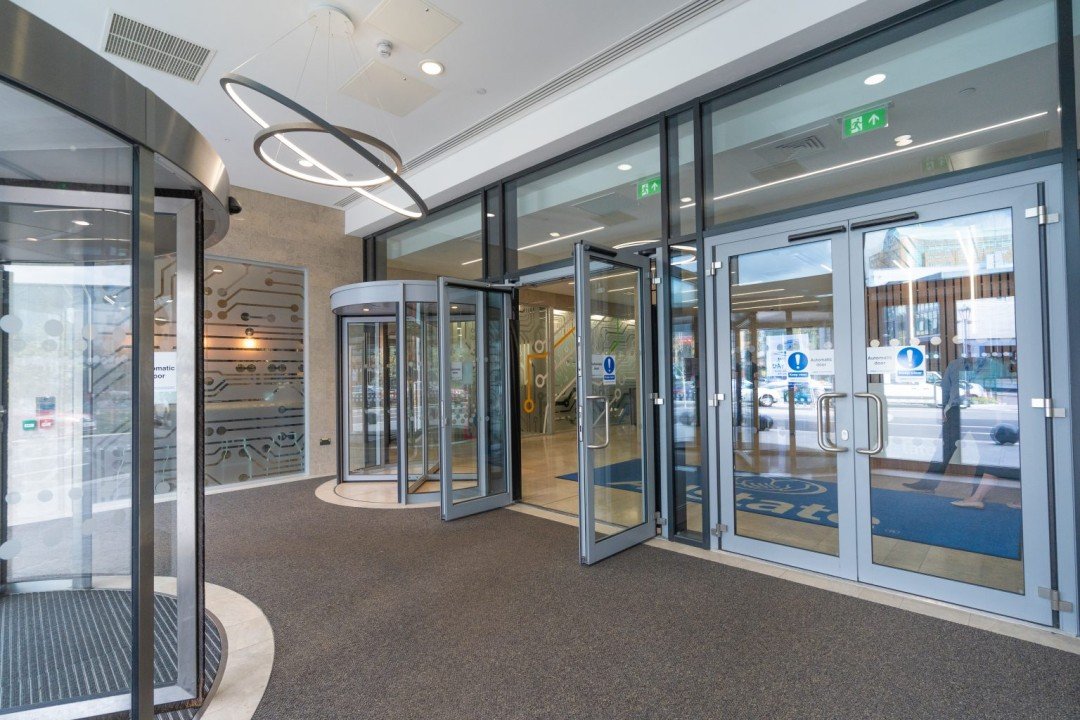
Table of Contents
- Modern Challenges in Commercial Entrances
- Emerging Trends in Commercial Entryways
- Designing for Safety and Traffic Flow
- Energy Efficiency and Sustainability Initiatives
- Technology and Smart Access Integration
- Maintenance and Durability Considerations
- Future Outlook for Commercial Entries
Modern Challenges in Commercial Entrances
Commercial entrances are vital for safety, energy efficiency, and accessibility. Facility managers must balance security, evolving regulations, and aesthetics, especially in high-traffic areas like airports and hospitals. Effective design prevents energy waste, injuries, and pest infiltration.
Material selection is critical in overcoming these challenges. Many operators opt for stainless steel restaurant doors and similar high-durability options that resist corrosion, withstand heavy use, and offer easy cleaning to meet strict hygiene standards. The robustness of these doors makes them especially well-suited to settings exposed to frequent impacts, swinging carts, and significant temperature differences, like those experienced by kitchens or cold storage facilities.
Emerging Trends in Commercial Entryways
The landscape for commercial entryway solutions is rapidly evolving, blending technology, aesthetics, and practicality. One of the most notable trends is the move toward hands-free and touchless door operation. Driven by heightened concern for hygiene following recent global health events, facilities are investing in automated doors, motion sensors, and foot pulls to reduce the number of shared touchpoints in public areas.
Transparency and open lines of sight are also becoming more prominent. By incorporating clear panels or windows into entry doors, employees and visitors gain better visibility, reducing the risk of accidents and enhancing safety. Incorporating antimicrobial finishes and easy-clean materials into door surfaces sets new standards for cleanliness, especially in healthcare and food service industries.
Architectural styles are shifting to prioritize broad, easily navigable entries, non-barrier thresholds, and unified innovative access systems. The blend of tradition and innovation is evident in dual-mode doors that function as manual and automated entries when needed, catering to various use scenarios and customer preferences.
Designing for Safety and Traffic Flow
Well-designed entries don’t just look impressive—they guide the flow of people efficiently and create safer environments. For organizations operating in high-density areas like transportation hubs or large retail complexes, it’s crucial to direct foot traffic and minimize congestion, especially during peak hours. Creating pathways that allow for unhindered emergency egress is essential for meeting local and national fire codes.
Accessibility features, such as low-profile thresholds, push-button or sensor-activated openers, and high-visibility markings, ensure equitable access for people of all abilities. According to the National Fire Protection Association (NFPA), standards require that exit doors swing in the direction of exit travel and remain clear of obstructions, boosting safety during emergencies.
Additional considerations include using automatic closers to ensure doors aren’t left open accidentally, proper lighting, and selecting shatter-resistant materials in higher-risk environments. These combined efforts contribute to easier wayfinding, improved evacuation procedures, and a more positive experience for all building occupants.
Energy Efficiency and Sustainability Initiatives
Sustainable entryway design is central to commercial building strategies to reduce environmental impact and operational costs. Double-door vestibules, tight weatherstripping, and insulated panels can significantly reduce uncontrolled air infiltration. Research cited by the Department of Energy indicates potential reductions in energy loss by up to 30% when these techniques are implemented thoughtfully.
Commercial spaces can enhance sustainability by selecting recyclable materials for doors and frames, such as stainless steel or aluminum. These materials provide long service lives and are easy to keep clean. Automated closures also help prevent doors from being left ajar, keeping climate-controlled air inside and enhancing building efficiency.
Many organizations pursue LEED or similar certifications to demonstrate their commitment to sustainability. This strengthens a brand’s environmental reputation, attracts clients and tenants who prioritize green building practices, and offers lower utility bills over time.
Technology and Smart Access Integration
Innovative technology is revolutionizing the way buildings manage access and boost security. Keyless entry systems powered by smartphones, RFID badges, or facial recognition can be programmed to grant different access levels, increasing flexibility and tracking entry events for auditing or safety purposes. This advanced access management is now widely used in offices, data centers, and logistics facilities.
Smart doors and sensors generate data that building managers can use to optimize traffic patterns, schedule maintenance before costly breakdowns, and spot inefficiencies as they arise. Integration with facility-wide management systems allows real-time alerts about unauthorized access or potential safety hazards, empowering facility teams to act quickly and decisively.
This seamless integration not only simplifies security but also contributes to occupant comfort—imagine never having to fumble for a key or touch a door handle during a busy lunch rush or shift change in a large organization.
Maintenance and Durability Considerations
Selecting entry doors designed for endurance and minimal maintenance can translate to substantial savings and improved uptime. Facilities managers increasingly rely on solutions that feature stainless steel, heavy-duty hinges, and advanced hardware to withstand constant use, impact, and cleaning. Entryways in busy environments should be durable and easy to inspect and repair in case of damage.
- Schedule regular checks for alignment and smooth operation.
- Inspect hinges, seals, and closures for wear or loosening.
- Clean and disinfect door surfaces routinely, especially in healthcare or food areas.
- Promptly address malfunctions with automatic or smart-access components to avoid unexpected outages.
By adopting preventative maintenance practices and investing in quality from the start, organizations minimize costly repairs, improve long-term door performance, and reduce disruption to business activities.
Future Outlook for Commercial Entries
The future of commercial entryways is poised to become even smarter, safer, and more user-focused. Continued innovation in antimicrobial materials and touchless controls will likely become mainstream, supporting global trends in health consciousness and preventative design. Deeper integration between access control and building-wide management systems is anticipated, enabling even more responsive, data-driven operations.
From a user perspective, entry designs will increasingly reflect universal accessibility, including features for those with mobility or vision impairments. Environmental goals—such as carbon-neutral door materials or climate-adaptive vestibule designs—are expected to shape product development in the years ahead.
Organizations prioritizing thoughtful entry solutions ultimately enhance operational efficiency and set new safety, sustainability, and occupant satisfaction standards.




